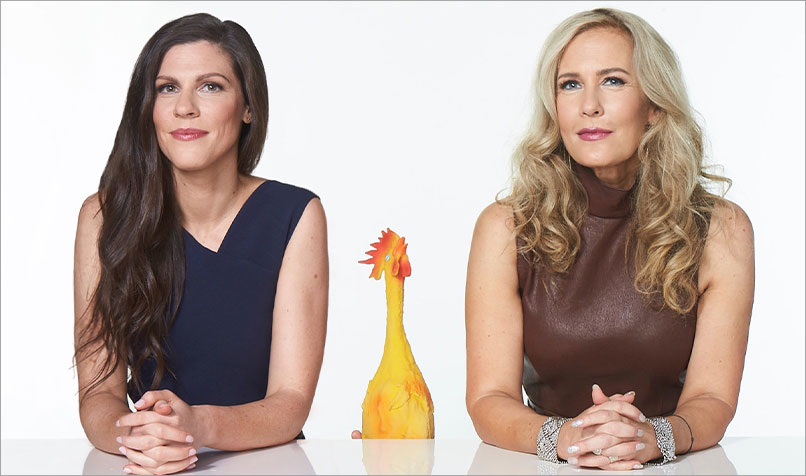Loading component...
At a glance
- The use of humour in workplace conversations is an effective means of building stronger connections quickly.
- Research also shows that banter can enhance the culture of support within a team and expedite the achievement of important goals.
- Another important function of humour is rebuilding the connections that may have been lost or affected by prolonged working from home.
By Linda Moon
Few accountants have capitalised on their sense of humour to advance their professional career better than Alan Cameron-Sweeney.

After Cameron-Sweeny graduated as an accountant from Griffith College Dublin, his intense dislike of public speaking led him to enrol with the local chapter of the Toastmasters Club, where he quickly discovered his ability to rouse a laugh.
This led him to stand-up comedy, and eventually to coaching fellow accountants and finance professionals in effectively communicating financial information to stakeholders at all levels of business.
Cameron-Sweeney says his foray into stand-up comedy and public speaking has vastly improved his tolerance for embarrassment and being judged for his ideas.
Another benefit has been building work relationships of all kinds.
“People associate you with having a good time, and they’re happy to see you again. People will do more things for you if you build that rapport,” he says.
“It’s those soft skills that accountants need now.”
More than a laugh

When used well, humour can be one of the greatest competitive advantages in business, say Dr Jennifer Aaker and Naomi Bagdonas, who have written a book, Humour, Seriously, on this very topic.
Behavioural scientist Aaker and corporate strategist and lecturer at Stanford’s Graduate School of Business Bagdonas have spent the past decade researching humour in the context of work.
When people have a laugh before launching into a serious conversation, they are more likely to disclose personal information, says Aaker, because laughter shortens the path to connection.
The biological mechanism for this is simple. Laughter releases “feel-good hormones”, endorphins and dopamine, while at the same time reducing the level of the stress hormone cortisol.
“As far as our brains are concerned, laughing is like exercising, meditating and having sex – at the same time,” Aaker says.
Cameron-Sweeney intentionally uses humour as a tool to put others at ease and break down barriers.
“As soon as you meet up, there’s always a comment about something to have a laugh,” he says. “If nobody does it, you don’t build that social bond with the team.”
This strategy is backed by research. A James Cook University study has found banter helps men better support each other and achieve their goals, while research from Australian National University shows that humour can reduce the impact of workplace aggression and increases productivity.
“Leaders with a good sense of humour are seen as 27 per cent more motivating,” Bagdonas adds.
“Their teams are more bonded and creative”, while customers are willing to pay up to 20 per cent more when a salesperson ends their pitch on a light-hearted or funny note.
How to use humour in the workplace
One need not be particularly witty to reap the positive effects of humour in the workplace, and anyone can learn the basics.
“Humour is a teachable skill,” says Bagdonas, and she should know – together with Aaker, she presents a class on how leaders can use humour in business at Stanford’s Graduate School of Business.
Humour is frequently misunderstood, tricky to define and slightly mysterious. For example, amusement doesn’t always generate laughter, while not all laughter indicates hilarity. Importantly in the business context, what is considered funny can vary from person to person and culture to culture.
A key insight of Bagdonas’s and Aaker’s work is that using humour well is as simple as changing some of our engrained behaviours.
"People associate you with having a good time, and they’re happy to see you again. People will do more things for you if you build that rapport. It’s those soft skills that accountants need now."
The competitive nature of business, and our busyness, tends to make a lot of our behaviour transactional. Small shifts in our behaviour can bring out our humanity – and thereby humour – into the job.
One small but effective example is tweaking how we sign off our emails. Instead of “Best wishes” or “Kind regards” they suggest “Yours, heavily caffeinated” when you’ve been up all night working on a presentation, or “Let’s never speak of this again” when completing a long or challenging project.
“Don’t look for what’s funny – just notice what’s true,” Bagdonas suggests. “This is about more than telling jokes. It’s about looking at the world in a different way.
“When we live our lives on the precipice of a smile, we shift how we interact with the world and, in turn, how it interacts back.”
Challenge your self-view
What holds many of us back from using humour at work is the belief that we are not naturally funny or quick-witted.
Cameron-Sweeney says people wrongly tend to equate workplace humour with the on-stage performance of stand-up comedian.
“When you’re using comedy in the workplace, you’re not necessarily going for the full belly laugh,” he says.
“Even small chuckles are enough to build rapport and for others to associate you with having a good time.”
Another hesitation comes from not knowing how to weave humour into work settings without seeming inappropriate or contrived.
Cameron-Sweeney suggests incorporating entertaining stories from your personal life into presentations, meetings and other work occasions. Talk about your weekend and anything new.
“I always make a point to pick out if a guy has had a haircut,” he says. “People don’t pay blokes as many compliments about their appearance as women, and I think that’s why it’s a bit more jovial.”
In some group settings, joking doesn’t feel appropriate. In such situations, focus your humour one-on-one, he suggests.
When in doubt, he says the safe zone is self-depreciating humour, because “it’s not attacking anybody – it’s making fun of yourself”.
If you genuinely struggle with seeing the funny side of life, objects like funny mugs at your desk or cartoons can still associate you with humour, he says.
“That’s a conversation starter and gets a laugh that will build rapport and break the tension.”
Proceed with caution
Humour can be a double-edged sword, which can easily cross over into sarcasm, mockery and other types of aggression that can backfire, harm relationships and offend and isolate others.
To avoid destructive outcomes, “start by recognising it’s not about you”, Aaker says.
“Ask, ‘How will this make other people feel?’, which means never punching down – that is, making fun of someone of lower status.
“And be sure to check your distance – how close are you, personally, to what you are making light of? I can make fun of my mother, but not your mother.”
Cameron-Sweeney advises never using humour to explain away your failure.
“I think it would come across as disrespectful,” he says. “If your boss isn’t happy, it’s not the time to crack a joke.”
Humour can defuse stressful situations, but this manoeuvre is not for beginners.
If you are still testing out your comedy skills, avoid high-stake situations, Cameron-Sweeney advises.
“Learn how to use it in your team, when bonding with new people and stuff like that – then, slowly progress to higher stakes. It becomes a bit more nuanced, then.”
Humour in crisis
The more stressful our environment, the more important humour becomes.
During the pandemic, there has been a huge decline in our mental wellbeing, trust and human connection. Humour can help us recover, Bagdonas says.
“What we know from the research is that humour can help us rebuild the connections many of us feel we lost during the pandemic – the connection from happy hours with colleagues, coffee breaks during the day, the passing catch-ups in the elevator. It can diffuse tension during stressful meetings and projects, particularly when the stakes are high.”
Instead of gravity and frivolity being at odds, they give power to each other.
Aaker agrees. “Where humour exists, love is not far behind.”
What's your humour style?

Everyone has their own style of humour. Knowing yours can help you use it more adeptly and authentically, as well as build empathy for those whose humour style is different from yours.
Stand-up – Natural entertainers who aren’t afraid to ruffle a few feathers to get a laugh.
Sniper – Edgy, sarcastic, nuanced and unafraid to cross lines in pursuit of a laugh.
Sweetheart – Earnest and honest, avoiding humour that might risk hurting feelings.
Magnet – Keeps things positive, warm and uplifting, avoiding controversial or upsetting humour while radiating charisma.
Source: Humour, Seriously

